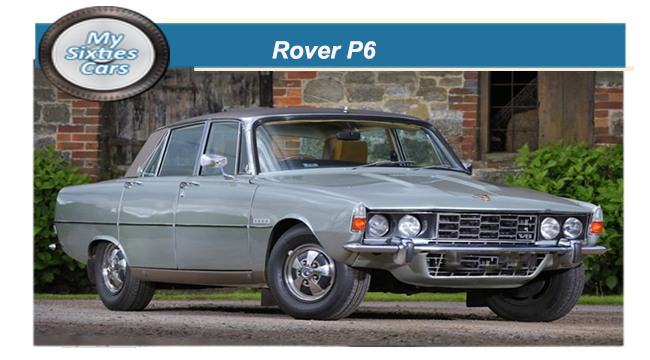 Going into the Sixties, the management team at Rover were well aware that finding a replacement for the P4 saloon was long overdue.
Going into the Sixties, the management team at Rover were well aware that finding a replacement for the P4 saloon was long overdue.
To take the company to the next stage,Rover were prepared to make a considerable investment, and this they did setting aside slightly more than £10 million to develop their new model, to be titled the P6.
T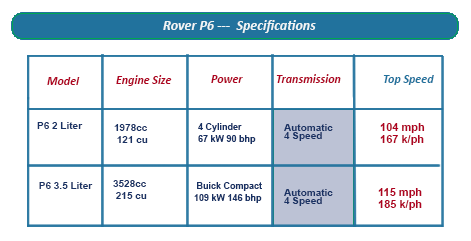 o indicate that they meant business, Rover established an autonomous production unit of more than 266,000 square feet (240,000 square meters) for the P6..
o indicate that they meant business, Rover established an autonomous production unit of more than 266,000 square feet (240,000 square meters) for the P6..
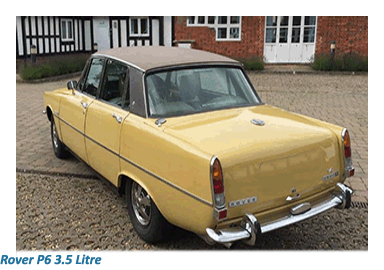 Rover’s engineering department had reportedly been working undercover on the P6 since the late Fifties, and by the early Sixties, the first prototypes began to appear secretly.
Rover’s engineering department had reportedly been working undercover on the P6 since the late Fifties, and by the early Sixties, the first prototypes began to appear secretly.
When the Rover P6 made its first public appearance in 1963, the 2000 as it soon became known, took the press and public by surprise thanks to its entirely new design.
A design that was much more in keeping with the times, earning the car the epithet of the “first young man's Rover.”
The 2000’s somewhat angular shape was a total departure from its comfortably rounded predecessor but was very much in tune with the times,
Inside, the new 2000 upheld all the best traditions of Rover comfort and space while safety features were numerous.
![]()
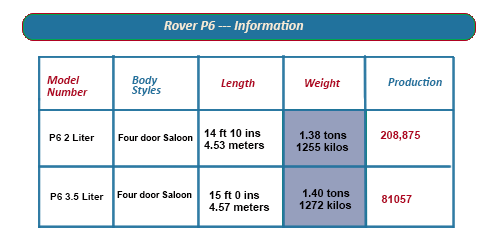 Among these safety features were a collapsible steering column, extensive crash-padding and general reduction of all dangerous projections being much in evidence.
Among these safety features were a collapsible steering column, extensive crash-padding and general reduction of all dangerous projections being much in evidence.
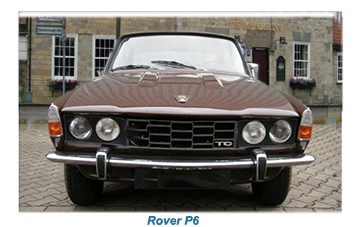 The new Rover P6 2000, clearly aimed at the rising middle-class market in the UK was an immediate sales success, orders pouring in from all parts of the world.
The new Rover P6 2000, clearly aimed at the rising middle-class market in the UK was an immediate sales success, orders pouring in from all parts of the world.
The 2000 appeared to be riding on the crest of a wave particularly when the model was voted European Car of the Year for 1964.
With the P6 2000 Rover had put their finger on a market that cried out for familiar big-car ambience with sports car manners, that the P5 had covered, although the P6 was that bit more compact.
Capable of reaching a top speed of 100mph (160kph) the Rover 2000 saloon, was capable of traversing the UK’s rapidly spreading motorway system, as well as being a comfortable and capable town car.
Initially the Rover 2000 was powered by a 1978cc (121 cu in) engine Rover at its launch in 1963.
Three years later an automatic transmission option was offered, as well as more power in the shape of the twin-carburettor TC model.
![]()
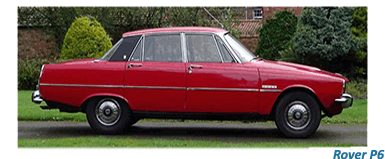 In 1968 Rover launched a powerful 3500 cc litre engined version of the P6 ,with power coming from the company's alloy V8 engine been used to such good effect in the Rover P5.
In 1968 Rover launched a powerful 3500 cc litre engined version of the P6 ,with power coming from the company's alloy V8 engine been used to such good effect in the Rover P5.
Initially only available as an automatic a manual version, the 3500S, was on offer from 1971
The P6 2000 continued in production until the Rover 2200 appeared in 1973 fitted with a bored-out version of the 2000 engine, allowing 2000 to be honourably retired.
Production of the entire P6 series finally came to an end in 1977 after the car had enjoyed a long and commercially successful run.
The P6 was, in the eyes of many, the last critically successful and most commercial series produced by Rover, a great British manufacturer that had failed to move with the automotive times.






